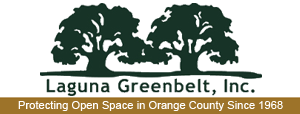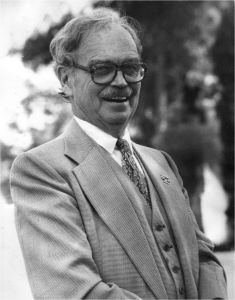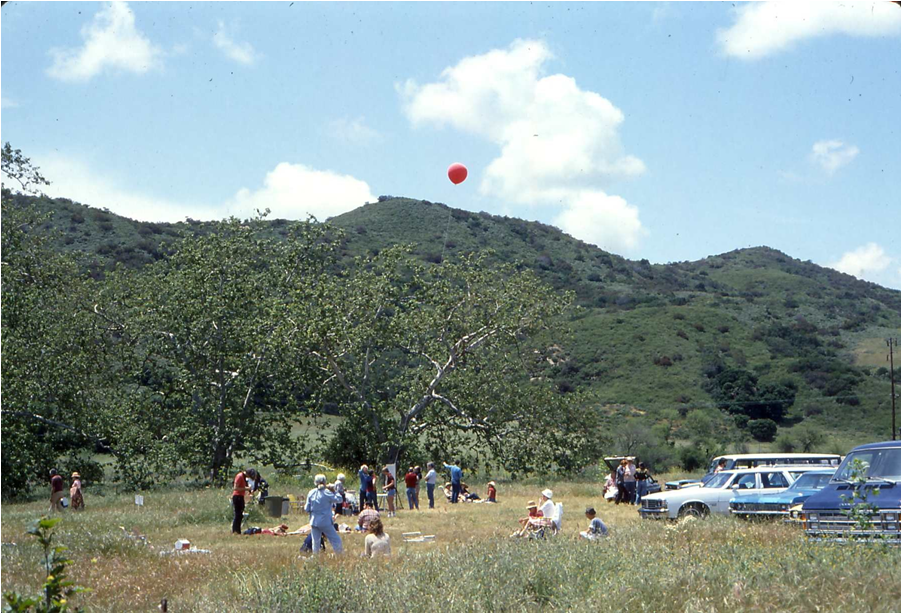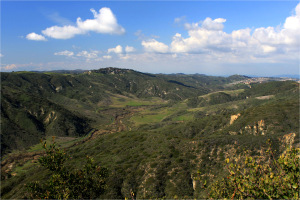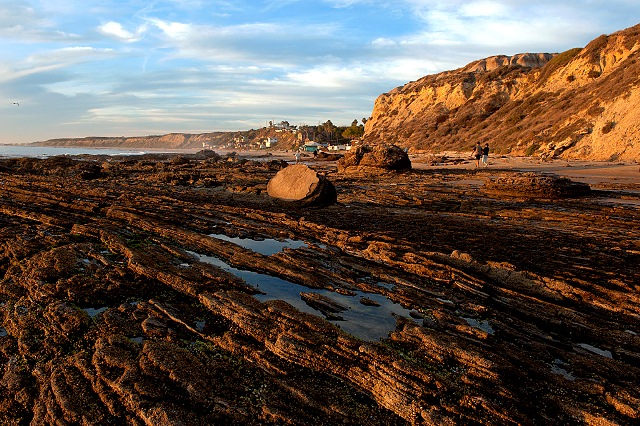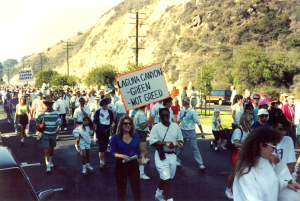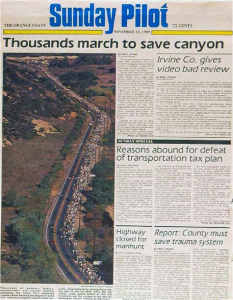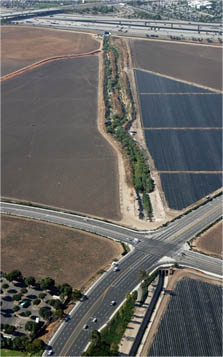Jim Dilley’s Legacy
In 1968, Laguna bookstore owner James Dilley had a dream… 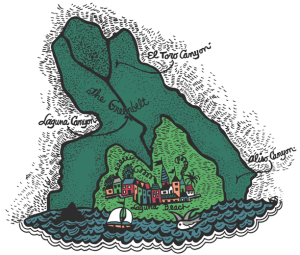
Dilley’s dream was to create an open space greenbelt around Laguna Beach like the ones he had admired in England. Dilley, a charismatic leader and speaker, founded Laguna Greenbelt Inc. to galvanize the community in support of his effort.
In his town Dilley found fertile soil to plant his ideas, and a band of enthusiastic supporters formed around him. They continued his work after he passed away in 1980. Over the years, this support has not waned, but rather has grown so much that in 1990, 80% of Laguna voters agreed to tax themselves to help buy Laguna Laurel, a crucial piece of the Greenbelt in Laguna Canyon.
Dilley’s legacy has grown through the efforts of Laguna Greenbelt Inc. as well as other dedicated local groups, the City of Laguna Beach, the County of Orange, the City of Irvine, and others. There have been protests, litigation, negotiations, public awareness campaigns, petitions, votes, and public hearings. It has taken persistence, passion, and generosity. Sometimes our organization has been in the lead, and at other times we have played a supporting role.
The timeline below tells some of the ongoing story of preserving our beautiful coastal lands.
Timeline: Laguna’s Preservation Movement
Many events in the timeline were adapted from The Laguna Wilderness, Ronald H. Chilcote, 2014, Laguna Wilderness Press. For those wishing to read more, excerpts of this book are provided on separate pages: the timeline and a narrative with a longer historic perspective.
1968-1976 The Greenbelt Idea Takes Hold
Inspired by his travels in England, bookstore owner Jim Dilley and his followers worked to win popular support for the concept of a Greenbelt around Laguna Beach and made sure that this concept was reflected in local government plans.
Across the country at this time, preserving the environment was becoming a powerful cause that was embraced not only by youthful activists, but also by politicians and people of all ages. The first national “Earth Day” was established by Nixon’s government in 1970, along with the Environmental Protection Agency. Statewide, the California Environmental Quality Act (CEQA) was also enacted in 1970, and the California Coastal Act formed the Coastal Commission in 1972. This period in our history was truly an unprecedented environmental revolution, which provided crucial tools for preserving the Laguna Greenbelt.
X
1968 James Dilley forms Citizens for the Greenbelt, which two years later is incorporated as Laguna Greenbelt, Inc.
1970 The Christmas Happening music festival draws twenty thousand people to Sycamore Hills.
1971 Dilley persuades the City of Laguna Beach and the Orange County Board of Supervisors to adopt the concept of the Laguna Greenbelt.
1975 The California Coastal Plan supports the Laguna Greenbelt concept.
1976 The Friends of the Irvine Coast (later “Newport Coast”) is formed to preserve open space between Newport Beach and Laguna Beach.
1978-1985 Major Land Purchases and Dedications
As south Orange County developed, large pieces of the Greenbelt were preserved, including Crystal Cove State Park and the future Aliso and Wood Canyons Wilderness Park. Meanwhile, large-scale development plans were being made that would threaten the heart of the Greenbelt, Laguna Canyon.
1978 The City of Laguna Beach purchases Sycamore Hills after years of struggle and litigation pitting developers against the city and Laguna Greenbelt Inc. Decades later, this land that Dilley called “the buckle of the Greenbelt” would become the James Dilley Preserve. To pay for the land, a parcel fronting on El Toro Road was sold for development.
1979 Negotiations with the Aliso Viejo Company result in dedications of Aliso, Wood, and Mathis Canyons after a lawsuit by Village Laguna (joined by Laguna Greenbelt Inc.). Laguna Greenbelt Inc. remains watchful and involved with County plans for these 3,293 acres until they are opened to the public as Aliso and Wood Canyons Wilderness Park.
1979 Laguna Greenbelt Inc. efforts to establish the Orange Coast National Park fail. However, the State of California makes a $32.5 million purchase of 2,888 acres of beach and backcountry land from the Irvine Company that is dedicated in 1984 as Crystal Cove State Park.
1986-1993 Saving Laguna Canyon and Creating Laguna Wilderness Park
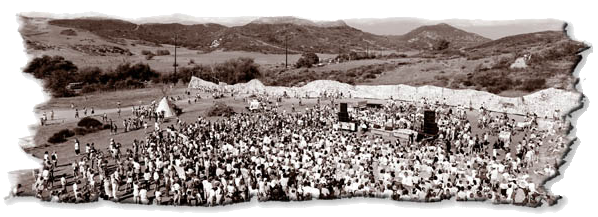
This is what many people in Laguna remember as the time when “we saved Laguna Canyon”. The Walk, a massive protest in 1989, was the most visible moment in a long fight against a major development that was slated to be built in Laguna Canyon. When this fight was over, the Laguna Laurel area–instead of being developed–became the heart of Laguna Coast Wilderness Park. To experience some of this exciting time, see the commemorative video on our videos page: CLICK HERE
1986 Laguna Canyon Conservancy is established to defend Laguna Canyon from development.
1988 The proposed widening of Laguna Canyon Road to four lanes is finally defeated at the California Coastal Commission after an opposition campaign led by Laguna Canyon Conservancy.
1988 California Proposition 70 (Wildlife, Coastal, and Park Land Conservation Act) is passed, which includes a $10 million grant to the City of Laguna Beach for the purchase of natural lands “within and contiguous to the Laguna Greenbelt.”
1988 City of Irvine residents vote to approve the Irvine Open Space Initiative. This leads to future open space dedications of Irvine land around Laguna Canyon, including Quail Hill and Shady and Bommer Canyons.
1989 The Tell, a 636-foot-long photo mural, is installed in Sycamore Hills by Jerry Burchfield and Mark Chamberlain to call attention to the development planned in Laguna Canyon. Volunteers help assemble hundreds of thousands of photos contributed by people all over the world.
1989 On November 11th, Veterans Day, eight to ten thousand protesters walk through Laguna Canyon to oppose the 3,200-home master planned Laguna Laurel development approved to be built in Laguna Canyon. This moment is the culmination of an opposition campaign started in 1983 that involved picketing, packed rooms at public hearings, legal measures, and The Phantom’s signs installed along Laguna Canyon Road.
About “The Walk”: The City of Laguna Beach, Laguna Canyon Conservancy, Village Laguna, and South Laguna Civic Association sponsored a rally at the Festival of Arts Grounds to Walk, Bike, Run or Ride the Bus to Sycamore Hills. Harry Huggins (Walk Director), a current Greenbelt board member and Charles Michael Murray (Concept Originator) had organized efforts to get the event promoted and advertised in store windows and on radio. To everyone’s surprise more than 8,000 people had heard the effective radio ads narrated by Jose Feliciano and had arrived from all over Orange County to ‘Save Our Canyons’. The crowd had learned that the Berlin Wall had been approved to be torn down the day before, energy was running high, almost euphoric, and the speeches from Laguna Beach Mayor Lida Lenney and other Council members had the full attention of a cheering crowd sensing that serious change was possible. The citizens of Laguna Beach continued the rally throughout town that day and for months thereafter during the negotiations to purchase the land. See the video
“There’s a deer / so strong / she protects the Canyon / from wrong / Bambo / lead our fight on” – Road signs by The Phantom
1989-1990 A lawsuit by Laguna Greenbelt Inc. against The Irvine Company and the County of Orange allows for negotiations for the purchase of the 2,150-acre Laguna Laurel by the City of Laguna Beach.
1990 Nearly 80% of Laguna Beach voters approve a property tax increase to fund the $20 million initial payment for the Laguna Laurel land.
1990 Through negotiations with The Irvine Company, Orange County acquires more than 3,000 acres above Crystal Cove State Park, including Los Trancos and Buck Gully. The same year, Aliso and Wood Canyons Wilderness Park opens to the public.
1990 The Laguna Canyon Foundation is formed to complete the purchase of Laguna Canyon lands. Support for the organization comes from Laguna Greenbelt Inc, Laguna Canyon Conservancy, Village Laguna, The Irvine Company, and the City of Laguna Beach.
1993 Laguna Coast Wilderness Park is dedicated, and the public is guided onto the trails by the first volunteer docents to graduate from the Laguna Greenbelt Inc. naturalist training program. The park continues to grow in later years.
1994-2014 Roadways, Park Enhancements, and a Vital Connection
After the joyful opening of Laguna Coast Wilderness Park in 1993, it soon suffered a blow when the 73 Tollroad was constructed right next to James Dilley Preserve. However, the Greenbelt continued to grow through land purchases and dedications—both in the park and elsewhere. The Crystal Cove State Park coastline changed with the removal of trailers from El Moro beach, the El Moro campground opening, and restoration of the historic cottages. Laguna Greenbelt Inc. began work on a wildlife corridor to ensure the long-term health and survival of coastal wildlife by providing a connection to the Santa Ana Mountains.
1994 The San Joaquín Hills (73) Toll Road is constructed through Greenbelt open space despite community opposition and legal action by Laguna Greenbelt Inc. and the Laguna Canyon Conservancy.
1994 The County of Orange begins restoring the Laguna lakes, following a plan prepared by consultants for Laguna Greenbelt Inc.
1998 Laguna Greenbelt Inc. mobilizes 150 volunteers to gather signatures for an open space initiative within Laguna Beach to ensure that about 1,000 acres of City-owned open space would remain protected. More than 3,000 residents sign the petition and the City Council adopts the ordinance without putting it on the ballot.
2000 California Proposition 12 makes $12.5 million available for the purchase of Laguna open space.
2001 The Irvine Company donates the final Laguna Laurel parcel.
2004 The extension to a 20-year lease ends for the private trailer park at El Moro Canyon in Crystal Cove State Park, marking the end of the residents’ bitter fight against a coalition led by Laguna Greenbelt Inc. that wants the nearly 300 trailers removed from the beach and canyon as promised by the trailer owners.
2006 The first historic Crystal Cove cottages are opened to state park visitors.
2006 Nearly 4 miles of Laguna Canyon Road (SR-133) are relocated and widened in outer Laguna Canyon. The dedication marks the end of Laguna Greenbelt Inc. involvement in 12 years of planning to ensure that the highway would no longer bisect the Laguna Lakes, and wildlife undercrossings would be incorporated into the design.
2007 The James and Rosemary Nix Nature Center opens in Laguna Coast Wilderness Park.
2010 Crystal Cove State Park opens the El Moro Campground to the public where private trailers once stood.
2013 The Irvine City Council adopts the Irvine Wildlife Corridor Plan, taking a major step towards creating a wildlife corridor that will link the Laguna Greenbelt with the Santa Ana Mountains. This plan is the product of collaborative work between the developer of the Great Park Neighborhoods and a coalition led by Laguna Greenbelt Inc.
